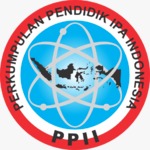Pengaruh Variasi Suhu Sintering Terhadap Struktur Kristalin Hidroksiapatit Tulang Iga Sapi
DOI:
https://doi.org/10.29408/kpj.v7i2.20840Keywords:
Hydroxyapatite, Bovine bone. X-Ray Diffraction, Match3, Rietica, Lattice parameters, Cell volume, DensityAbstract
A study entitled " The Effect of Sintering Temperature Variations on the Crystalline Structure of Bovine Bone Hydroxyapatite" has been carried out. The aim of this research is to understand how the sintering temperature influences the hydroxyapatite lattice parameters and to understand how the sintering temperature influences the volume and density of hydroxyapatite. The synthesis process begins with a calcination at 300 °C for one hour, followed by a sintering process with varying temperatures, namely 600 °C, 700 °C and 800 °C for samples A, B and C, respectively. To determine the hydroxyapatite content in the samples, then characterization using XRD was carried out. XRD results analysis was carried out using match3 and Rietica software. Identification results using match3 software obtained the presence of hydroxyapatite compounds and impurity compounds in the form of (Calcium trimagnesium carbonate huntite, Fluorine, Magnesium Hydrogensulfate Hydrate, Sassolite, Zemannite). The volume fraction of hydroxyapatite obtained in this study ranged from 68.6 – 82.8%. The higher the sintering temperature, the greater the volume fraction of hydroxyapatite. The Refinement results show that the higher the sintering temperature, the smaller the value of the lattice parameters in the direction of the a and c axes. Variations in sintering temperature also affect the resulting unit cell volume and density. The higher the sintering temperature, the smaller the unit cell volume, conversely the greater the unit cell density value.
References
Markovic, M., Fowler, B.O. and Tung, M.S. 2004. Preparation and Comprehensive Characterization Of A Calcium Hydroxyapatite Reference Material. Journal Of Research Of The National Institute Of Standards and Technology 109(6), 553.
Sadat-Shojai, M., Khorasani, M.T., Dinpanah-Khoshdargi, E and Jamshidi, A. (2013). Synthesis Methods For Nanosized Hidroksiapatit With Diverse Structures. Acta Biomaterialia 9(8), 7591-7621.
Suci, I.A. dan Yulius, D.N. 2020. Sintesis Karakterisasi Hidroksiapatit (HAp) Dari Cangkang Kerang Ale-Ale Menggunakan Metode Presipitasi Double Stirring. Kalimantan Barat: Universitas Panca Bhakti.
Wahyudi, T.C., Irza, S. dan Shirley, S. 2019. Potensi Pengembangan Material Implan Tulang Hidroksiapatit Berbasis Bahan Alam Lokal. Bandar Lampung : Universitas Lampung.
Kisi, E.H and Howard, C.J. 2012. Applications of Neutron Powder Diffraction. Oxford University Press.
Wibisono, Y. 2017. Biomaterial dan Bioproduk. Malang: UB Press, 61:IV.
Pokhrel , S. 2018. Hydroxyapatite: Preparation, Properties and Its Biomedical Applications. Scientific Research Publishing. 8 (225-440)
Akram, M., Ahmed, R., Shakir, I., Ibrahim, W.A.W., Hussain, R. Extracting hydroxyapatite and its precursors from natural resources, J. Mater. Sci. 49 (2014) 1461-1475.
Arif, S., Hermana, G.N., Khalida, Z., Arif, S.W., Puspita, Ika. 2020. Synthesis of Biomaterial Hydroxyapatite from Limestone by Using Two-Step Conversion. International journal of science, engineering, and information technology 5 (1) :
Milovac, D., Gamboa-martínez T.C., Ivankovic, M., Gallego, G., Ivankovic, H. PCL-coated hydroxyapatite scaffold derived from cuttle fish bone: in vitro cell culture studies, Mater. Sci. Eng. C 42 (2014) 264-272.
Jamillah Amer Nordin, Djoko Hadi Prajitno, Syafiqah Saidin, Hadi Nur., Hendra Hermawan. 2015. Structure–property relationships of iron–hydroxyapatite ceramic matrix nanocomposite fabricated using mechanosynthesis method. Materials Science and Engineering C 51 : 294-299
Pu’ad, N.A.S., Koshy, P., Abdullah, H.Z., Idris, M.I., Lee T.C. 2019. Heliyon Review Article. Science Direct Elsevier.
D. Kong, X. Xiao, X. Qiu, W. Zhang, Y. Hu, Synthesis and characteizaion of europium ions doping of hydroxyapatite nanorods by the simple two step method, Func. Mater. Lett. 8 (2015) 1550075.
A.L. Boskey, Natural and Synthesis Hydroxyapatites. Biomaterials Science: an Intriduction To Materials : third ed., Third Edit, Elsevier, 2013.
A. Balamurugan. A.H.S. Rebelo, A.F. Lemos, J.H.G. Rocha, J.M.G. Ventura, J.M.F. Ferreira, Suitability evaluation of sol-gel derived Si-substituted hydroxyapatite for dental and maxillofacial application thrugh in vitro osteoblasts response, Dent. Mater. 24 (2008) 1374-1380.
E. Hosseinzadeh, M. Davarpanah, N.H. Nemati, S.A. Tavakoli, Fabrication of a hard tissue replacement using natural hydroxyapatite derived from bovine bones by thermal decomposition method, International Journal of Organ Transplantation Medicene 5 (2014) 23-31.
R.X. Sun, Y.Lv, Y.R. Niu, X.H. Zhao. D.S. Cao, J. Tang, X.C. Sun, K.Z. Chen, Physicochemical and biological properties of bovine-derived porous hydroxyapatite/collagen composite and its hydroxyapatite powders, Ceram. Int. 43 (2017) 16792-1679
Jonathan Angelo Ranamanggala, Dewinta Intan Laily, Yossy Nur Annisa, dan Sari Edi Cahyaningrum. 2020. ARTIKEL REVIEW : POTENSI HIDROKSIAPATIT DARI TULANG AYAM SEBAGAI PELAPIS IMPLAN GIGI. Jurnal Kimia Riset 5 (2) : 141-150
Amirul Mukminin. 2019. Analisis Komposisi Fasa dan Parameter Unit Sel Kristal Hasil Kalsinasi Suhu Tinggi Abu Cangkang (Paguroidea) dengan Metode Rietveld. Jurnal Sains Teraoan 5 (1) : 43-48









